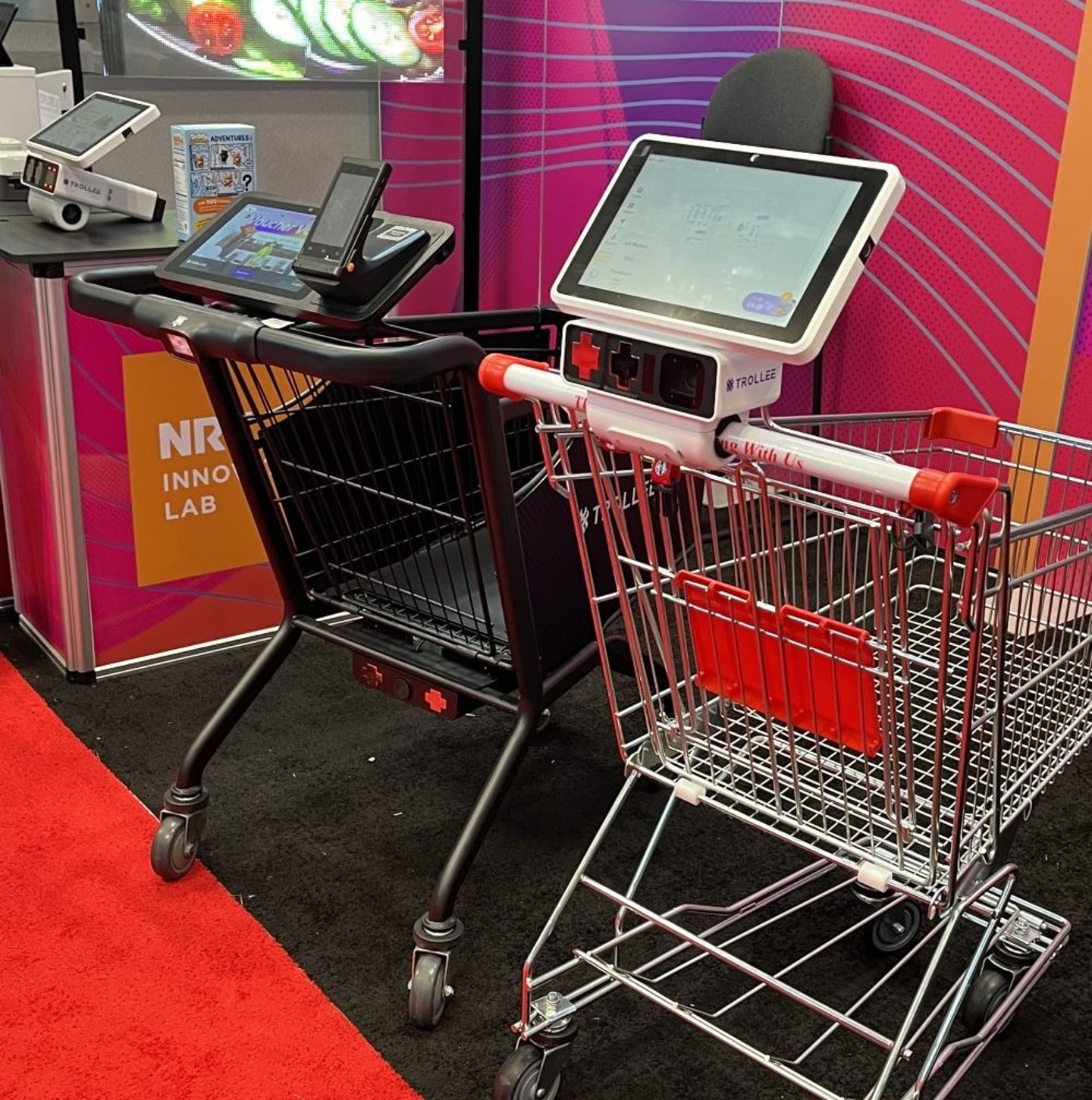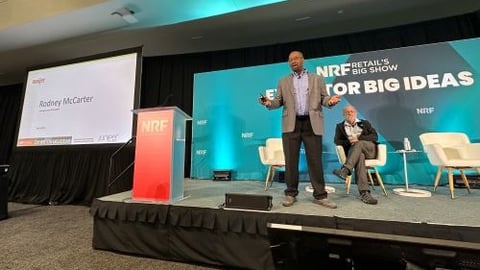Tomorrow’s Technology Today
COLUMN: Ahead of What's Next
Anyone in search of retail tech inspiration need look no further than the National Retail Federation (NRF) Innovation Lab at the trade organization’s Retail’s Big Show. This year’s iteration of the annual event, which took place Jan. 14-16 at New York City’s vast Javits Center, featured a lab full to bursting with creative solutions for grocers and other retailers, from autonomous robots to smart shopping carts, with companies making sure to spotlight how artificial intelligence — that current darling of the tech world, especially in its generative form — powers many of their offerings.
[RELATED: 5 Great Takeaways From CES, NRF and FMI]
A press tour that I took to this section of the show set the mood right away — attendees were welcomed by a real-time hologram of Seth Webb, EVP at venture-based strategy firm Tusk Strategies and a longtime curator of the lab, where “there’s always something new.” The hologram was the brainchild of Toronto-based AHRT Media, whose CEO, Larry O’Reilly, was on hand to discuss the technology, which he noted could be used to “create experiences in retail stores that you can’t get online.”
Pay With Your Face
One particular solution that caught my attention at the lab was the result of a partnership between Wink, a Plano, Texas-based biometric authentication provider, and Bold Commerce, a Winnipeg, Manitoba-based purveyor of “tailored checkout” offerings. The two companies have teamed up to develop a biometric payment platform, Bold Checkout with Wink, to enable consumers to pay for products through facial recognition.
Already in use in Asia and coming soon to North America, this “headless checkout” concept, as Wink CEO Deepak Jain described it, allows for checkout to occur anywhere, with no credit card needed, since the information is already entered in the system on an opt-in basis. The platform is also device agnostic, unlike Apple Pay and Google Wallet, which require certain devices to work. “No other solution can do that,” noted Jain proudly.
Among the potential uses for grocers cited by Jain were to prevent minors from purchasing age-restricted products and to enable shoppers to pick up ordered products from smart lockers. In fact, Jain divulged that one grocer had already expressed interest in adopting the solution for the latter purchase.
Meanwhile, Bold Commerce co-founder Jay Myers observed that the platform also served to address the lingering issue of cart abandonment — shoppers not completing their e-commerce purchases for a variety of reasons — by speeding up the transaction process, since no credit card is required to complete the order.
Save the Date!
No Gaming This System
In answer to my admittedly tongue-in-cheek question about possible ways to “game the system” through such crafty means as an underage daughter who strongly resembles her mother posing as the mom to buy some beer, or an identical twin assuming the identity of their onetime wombmate to purchase products that would then be charged to the sibling, Jain assured me that the platform could distinguish between similar-looking people, as well as living people and dummies or photographs, for that matter.
In cases where the resemblance between the actual person and the one attempting to use the platform is great enough to raise doubt, the solution will step up the authentication process by asking for the person’s voice. Since each voice, even of twins, is unique, this extra step will stop any would-be fraudsters cold.
So, sometime in the near future, when you order online and arrange to pick up items from a smart locker, before you can get your stuff, you may very well be asked to show your face. That’s just one fascinating example of tomorrow’s tech, according to NRF.







